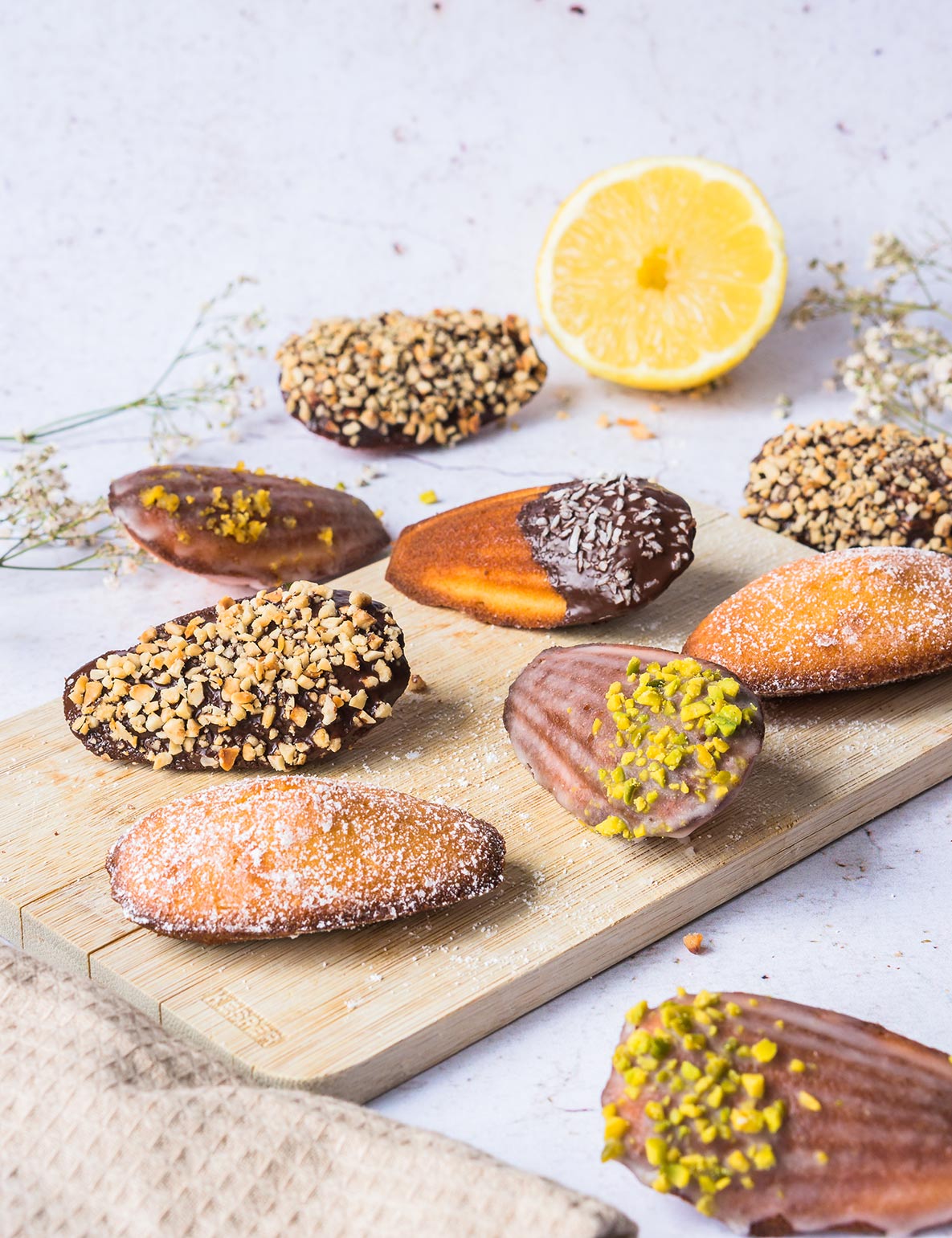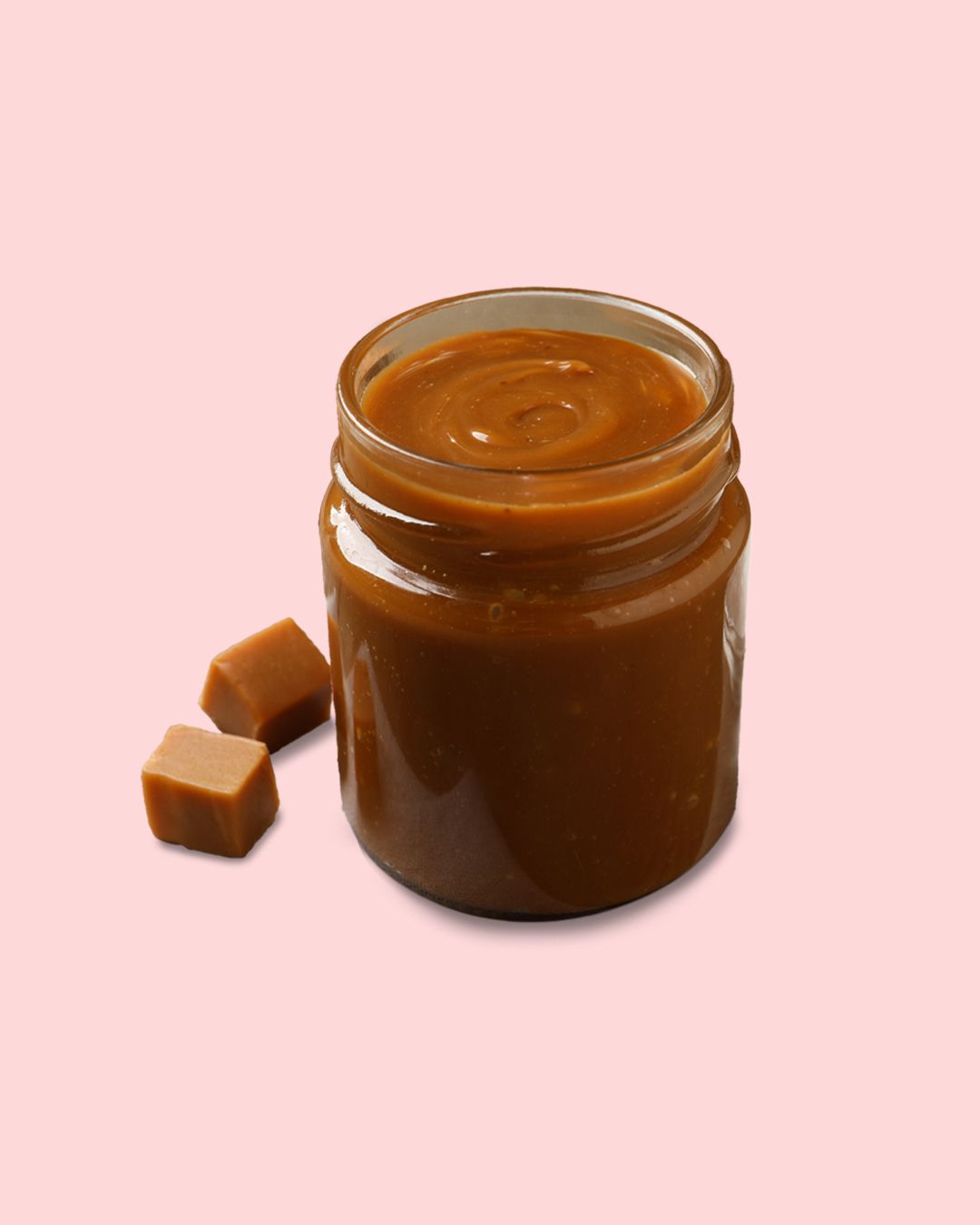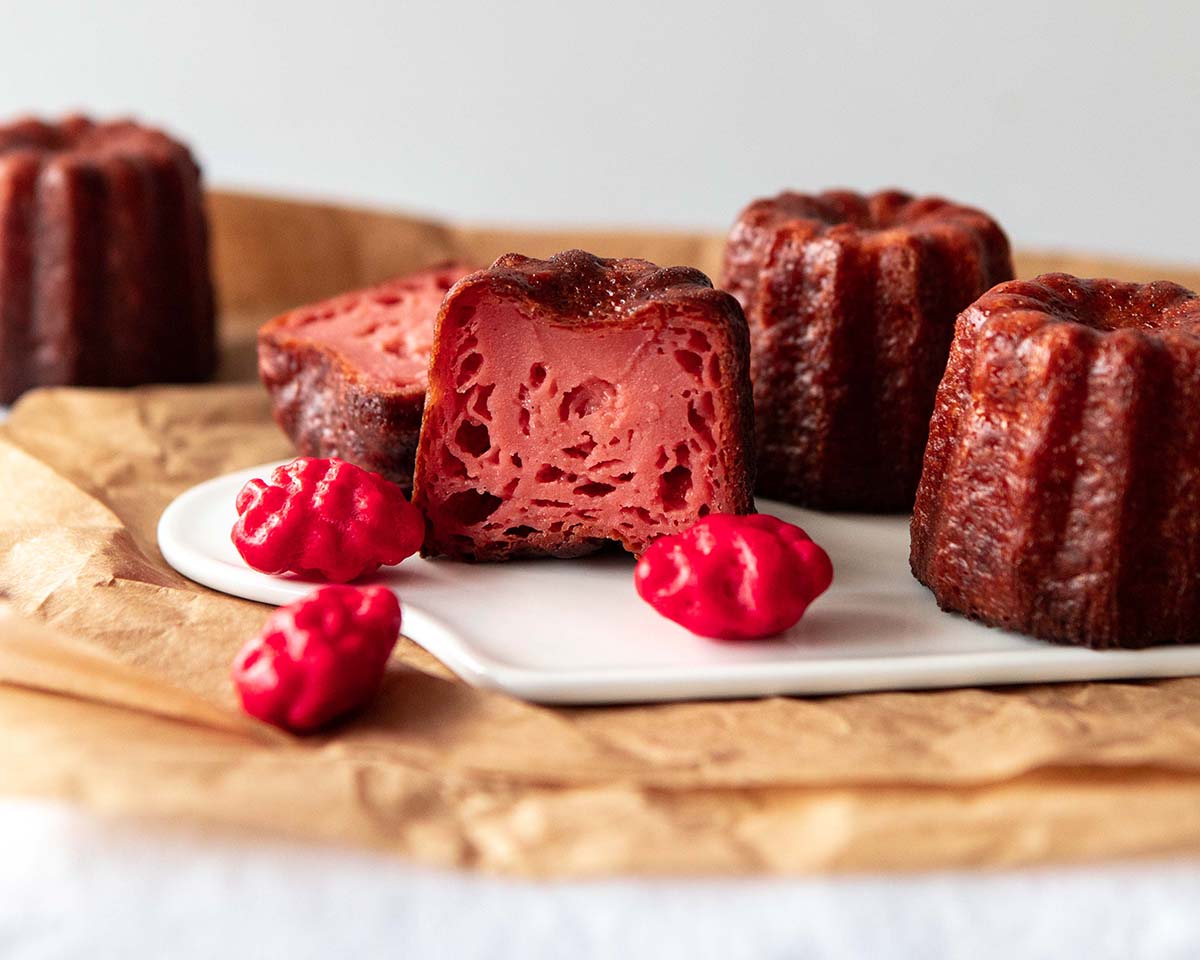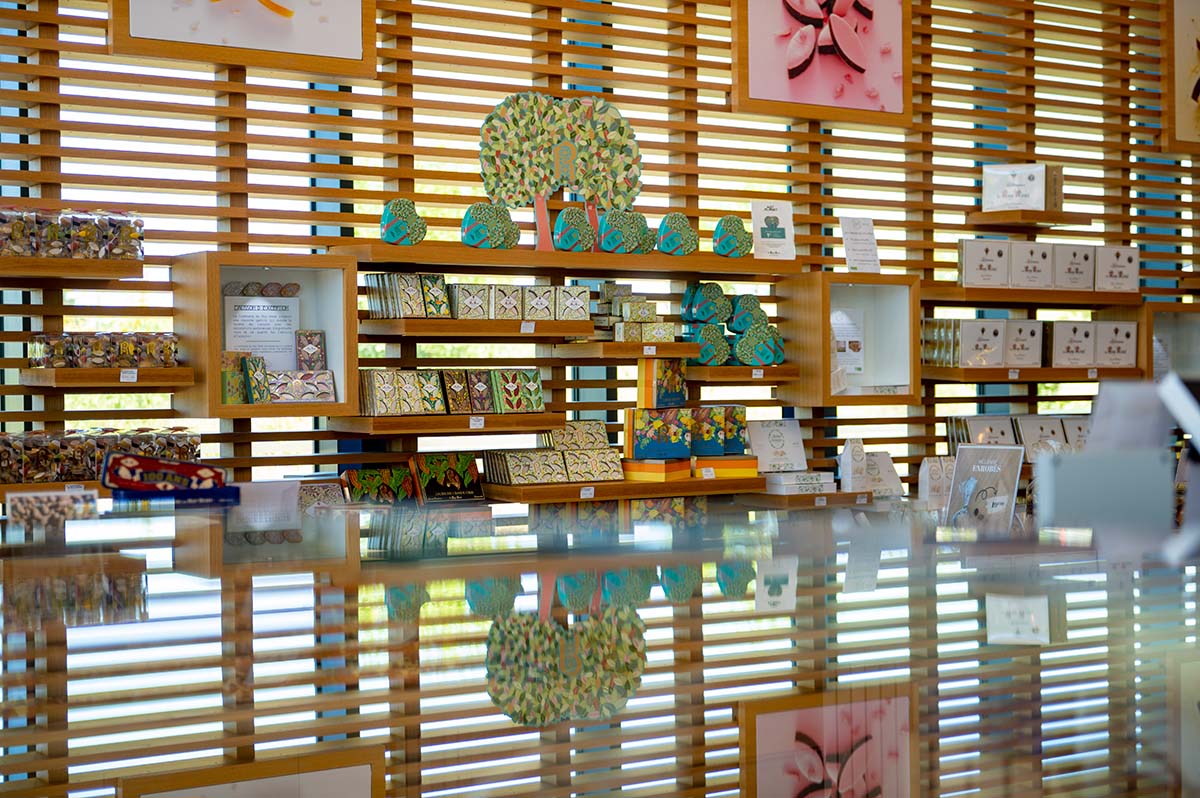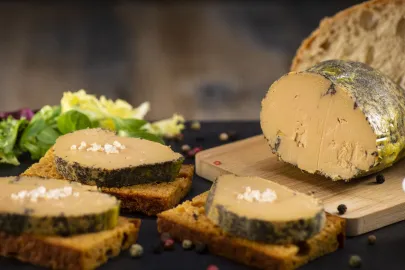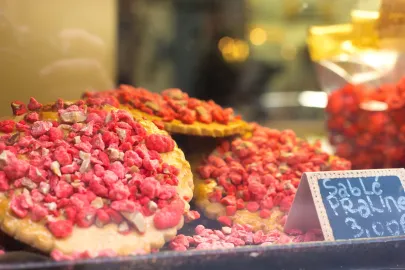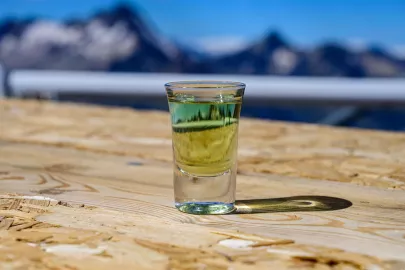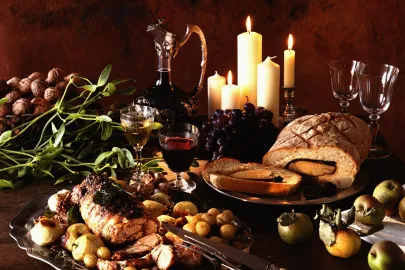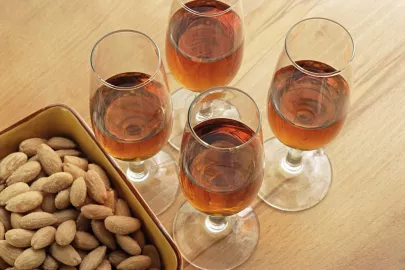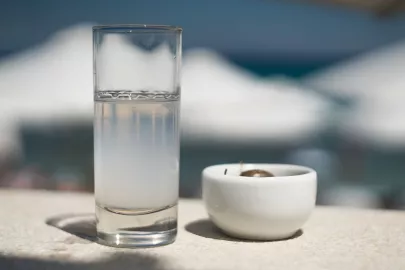France is renowned for its gastronomic scene, but also for its countless regional treats, which all tell a story of its terroir and tradition. From nougat in Montélimar to the famous Bordeaux cannelés, discover an edible map of the country’s most iconic confections.

While French gastronomy is renowned for its traditional hearty recipes, featuring cheese, wine, bread, and intricate desserts, or pâtisseries, did you know that the country also boasts many regional sweets?
From crunchy, lace-thin crêpes in Brittany to honeyed nougat in Montélimar, the country’s sweets are far more than a treat; they’re an edible map of regional traditions and know-how.
We’ve compiled them all in a map for you, but to add some context, here’s some tasty information on the origins and taste of those lesser-known treasures. Let’s take a look!
Sweet beginnings: How regional confections became legends
Like many good things in the French gastronomic scene, our sweet treats, or confiseries, as we like to call them, originate from monasteries. Back in the day, nuns and monks were skilled bakers who perpetuated their family’s recipes and turned them into art forms whose reputation transcended the monastery doors.
Some were created on purpose, like the elegant calissons d’Aix, shaped like almond-paste petals and traditionally handed out at weddings. Others, like the minty bêtises de Cambrai, were born accidentally, a candy-making slip-up that proved too tasty to forget.
So, what ties them together? The answer lies in local ingredients, traditional recipes, and a dash of regional pride.
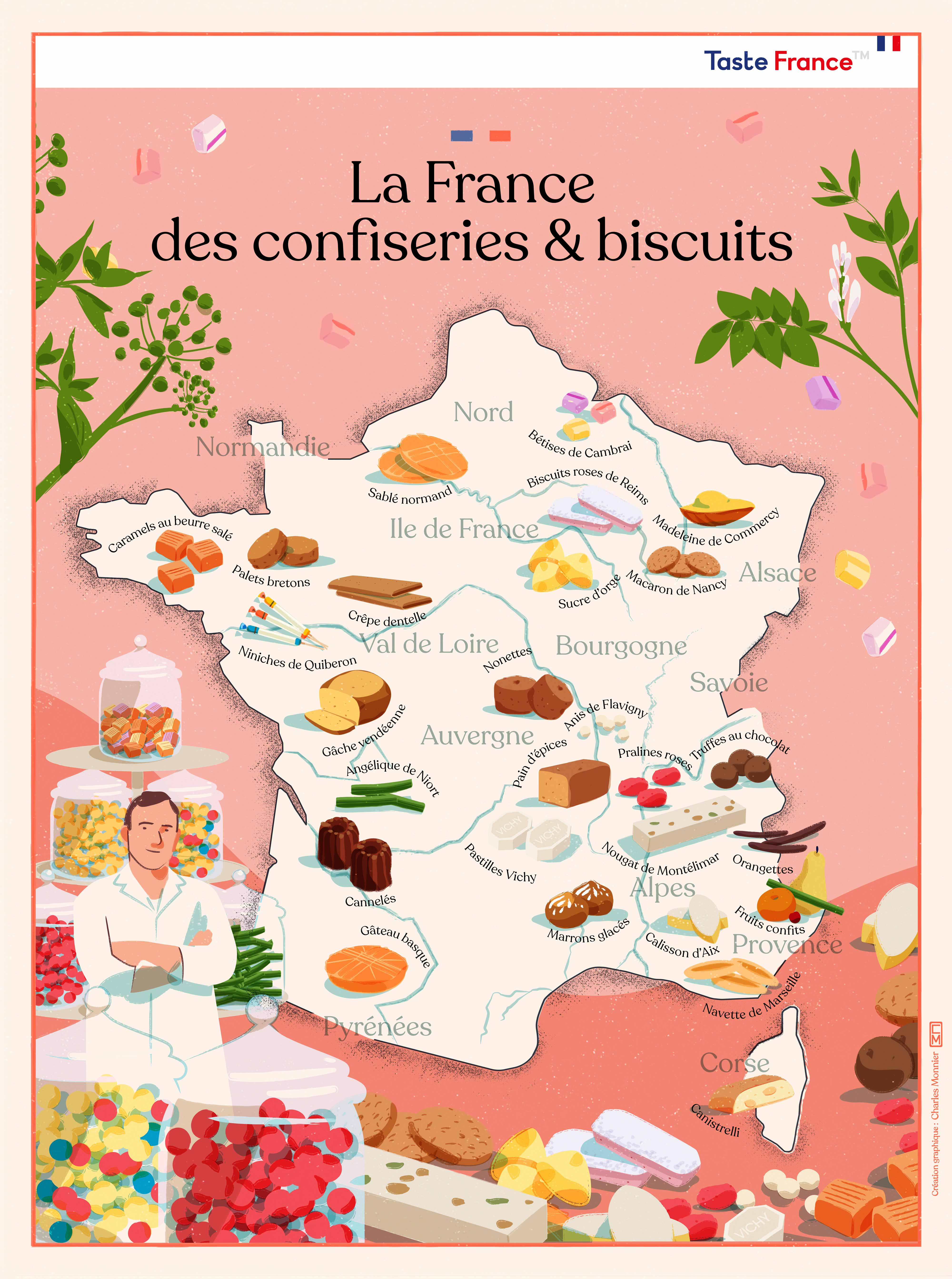
© Charles Monnier
Let’s take a sugar-coated tour de France 🗺️
Each region has its specialty, which they’ve been refining for centuries. Here’s a quick look at some of our favourites:
North/Haut de France
Have you ever heard of the bêtise de Cambrai? This tiny cake’s name means “mistake,” which is how it was created in the 19th century, when a young apprentice added mint to a caramel by mistake. The striped candy made a sensation and is still cherished by sweet tooths today.
Grand Est
This large region in the northeastern part of France has some of the most famous sweet treats of the country, starting with the biscuit rose de Reims, invented by the celebrated Fossier bakery. Those pink sugary delights were designed to be dunked into champagne without crumbling and became a favorite of royal courts worldwide.
Not too far away, the Madeleine de Commercy was invented by a young woman named Madeleine (coincidence? I think not) during an 18th-century banquet. The shell-shaped cakes were an instant favorite and are still beloved today, much like the macarons de Nancy, created in 1793 by two Benedictine sisters, Marguerite and Marie-Elisabeth. While they invented the small treats as necessities to survive during the revolution, these rustic, chewy, and rich macarons (not to be mistaken for Parisian macarons) earned them the forever title of Soeurs Macarons.
Normandy & Brittany
These colder regions thrive on sweet treats and have perfected them into an art form. The most famous one is arguably the sablé normand, which is a crunchy, buttery cookie, ideal for tea time.
If you have an even sweeter tooth, try out a caramel beurre salé, an iconic blend of Brittany’s salted butter with slow-cooked sugar, invented in the 1970s by Henri Le Roux in Quiberon. You can eat this with almost anything: cookie dough, ice cream, crepes…which is probably why it is so beloved worldwide today!
Finally, when visiting Brittany, do not miss out on crêpe dentelle, a delicate, crispy rolled biscuit that was invented by mistake (again) when a distracted cook overcooked a crepe and rolled it up to hide her mistake. Now industrially produced and in a much smaller format, it pairs beautifully with coffee, tea, or just as a daytime snack.
Centre & Loire
Less internationally known, France’s core regions also present a wide array of confiseries. When visiting, try a sucre d’Orge de Moret, a barley sugar stick initially created as medicine, or a slice of pain d’épices de Dijon, a spice and honey cake inspired by Chinese sweets.
Prepare also to be intrigued by the Angélique de Niort, made from candied Angelica stems, a plant known since antiquity for its medicinal properties. Cultivated in Niort since the 17th century, it’s cut, blanched, and slowly candied over several days. Its bittersweet herbal taste is an acquired one, but highly prized by pâtissiers worldwide.
Pays de la Loire & Atlantic Coast
We’re casting a wide net here, but these large territories are where you can find the renowned Niniches de Quiberon, slender lollipops that come in fruit or caramel flavors, and the famous Gâche vendéenne. This brioche, enriched with fresh cream and orange blossom, traditionally baked for Easter and family celebrations, owes its name to the old French gache, meaning “thick slice” or “dense bread.”
Auvergne
This region is home to the famous pastilles de Vichy, which are a treat found in many French purses. These tiny mints, initially developed in the 19th century using bicarbonate and mineral salts from Vichy’s thermal waters, are refreshing and mostly natural even today.
Southwest & Bordeaux
You’re in for a treat here! Those regions are home to the incredibly famous cannelés and truffes au chocolat, the famous Christmas essential made out of ganache and cocoa powder shaped into rough “truffles,” as well as marrons glacés. They are the quintessence of French confiseries, requiring intense traditional practices, and for some, over 20 steps of preparation over several days, to achieve their perfect balance.
Provence & Rhône Valley
In the southern parts of France, you will find the nougat de Montélimar, inspired by Italian torrone and the fruit confit d’apte, which are candied fruits slowly soaked in sugar syrup over several weeks, preserving their flavor and color.
In Aix-en-Provence, the best souvenir to try out is a Calisson d’Aix, a mini candied mix of ground almonds and candied melon, topped with royal icing and shaped like petals. The legend says they were first served at the wedding of King René of Anjou in 1454, and are still made through traditional methods and recipes only!
Marseille & Corsica
Marseille is technically in Provence, but we couldn’t end this quick tour de France of the country’s most famous treats without highlighting its eponymous Navettes de Marseille. These boat-shaped cookies are flavored with orange blossom and baked for Candlemas at the Saint-Victor Abbey. Biting into one of them might make your teeth ache (they’re notoriously hard), but these perfumed candies are a real treat to enjoy while strolling along the old port and the sea.
Finally, cross the Mediterranean and you’ll find yourselves in Corsica, famous for its canistrelli, typically flavored with white wine, anise, or lemon. These are also baked rather hard, as they were made to keep well for sailors and shepherds to enjoy on a well-deserved break!
A sugary heritage
These confections may look simple, but they carry centuries of tradition, creativity, and regional pride. Whether born in abbeys, kitchens, or factories, each one tells a story that’s as much about France’s geography as it is about its taste.
So next time you're in France, don’t just look for the perfect croissant but follow the sweet trail. You’ll discover amazing flavors and traditional charm. Bon appétit!

